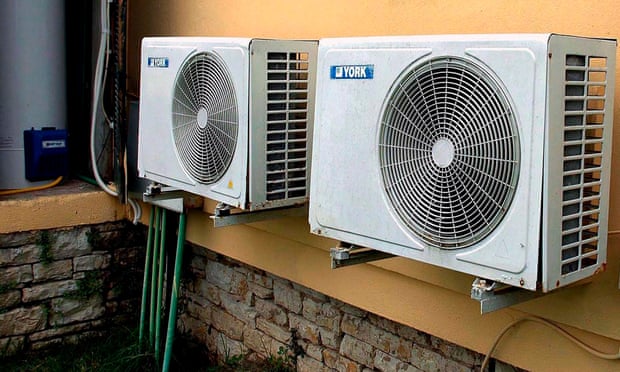By John Vidal, The Guardian, October 15, 2016
 |
The deal on hydrofluorocarbons, used in air-conditioning and cooling systems, has taken years to negotiate. Photograph: Dimitra Louvrou/EPA.
They went to Kigali to eliminate hydrofluorocarbons (HFCs) and take 0.5C out of future global warming, and the 170 countries who successfully negotiated an amendment to the Montreal Protocol agreed to get rid of 90% of them. Job done. Not bad for four days and three long nights’ work.
In fact, the Kigali deal on HFCs, announced on Saturday morning, is fiendishly complicated and has taken years to negotiate in different technical and political forums. It was only struck by an ambitious agreement to give countries different timescales to phase them out, alongside major chemical and big food companies accepting change, the personal determination of the US secretary of state, John Kerry, to get a deal before the election and developing countries agreeing to invest heavily in new technologies.
Rich countries, including the US, Japan and nations in Europe, will now start phasing out synthetic HFCs in 2019, whereas China agreed to peak emissions in 2024, while India and less ambitious countries chose 2028.
As such, the deal reflects countries’ differing levels of development. Because nearly all HFCs are made by a handful of giant northern chemical companies and are used in air-conditioning units and cooling systems made and sold in rich countries, it was relatively easy for their governments to put pressure on a single global industry. Besides, the alternatives, like hydrocarbons, ammonia and CO2, are widely available, safe, have been approved and are on the market.
The deal will make little difference to rich countries. The EU had already started to phase out HFCs and since 2011 had banned them being used in cars. Many global food and drink companies, like Coca-Cola, Pepsico and Unilever, have already started to switch fluorinated greenhouse gases with climate-friendly and other natural refrigerants that are more energy-efficient and can save money. The new agreement is welcomed by many chemical and manufacturing companies because it gives them market advantage over inferior products made in poor countries, as well as green kudos.
But a deal proved much harder for India, China and other developing countries to strike. Their companies have relied on old refrigeration and coolant technologies, and they will now have to invest heavily in R&D and upgrade or replace their factories and equipment. Just as in the wider climate negotiations, they accepted that they were part of the problem and possibly on track to become the main HFC users, but they insisted that, like climate change itself, this was primarily a western problem foisted on them.
The deal has been widely welcomed because it keeps the Paris agreement on track and is an important step towards reducing global emissions. Coming on the heels of a new deal to cap aviation emissions, and just weeks before the shipping industry tries to clean up its act and the UN climate talks resume, it is overwhelmingly positive.
In fact, the Kigali meeting need never have happened. HFCs were widely recognised as powerful climate-warming gases many years ago and governments deliberately missed the chance to eliminate them in 1987 when they agreed the Montreal Protocol to phase out CFC gases and save the ozone layer.
The ozone hole is at last slowly recovering and HFCs are now seen as just a small but important part of the growing climate-change problem. If only it took just a few long nights of negotiations to eliminate fossil fuels too.
No comments:
Post a Comment